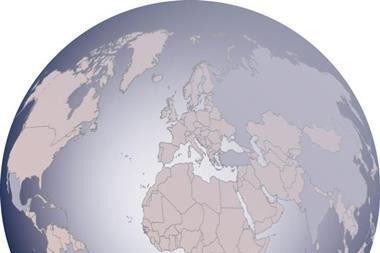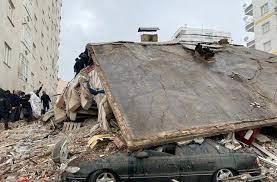Was the blanket ban on air travel caused by the ash cloud less about good risk management and more about an obsession with safety? Nathan Skinner reports
Talk about bad risk management! When aviation officials decided to shut down virtually all of central and northern Europe’s airspace as a precaution against Iceland’s volcanic ash cloud, many in the travel and airline industry slammed them for a huge over-reaction. British Airways boss Willie Walsh branded the flight ban a “gross over-reaction to a very minor risk”. Air traffic controllers said the decision to close airspace came from the Met Office, which uses scientific models to assess the risk of volcanic ash.
“I am very concerned that we have decisions on opening and closing of airports based on a theoretical model,” Walsh added. He claimed that there was no evidence of ash in the skies over London, yet the capital’s legendarily busy airports were closed, ruining millions of passengers travel planes and costing the industry billions.
Ryanair’s chief executive, Michael O’Leary, waded in saying: “It is frankly ridiculous that the flight plans of millions of air passengers are being disrupted on a daily basis by an outdated, inappropriate and imaginary computer-generated model. It is time these charts were done away with.” It is easy to side with the airline industry in its criticism of air traffic controllers for their reliance on a probability-based scientific model, which authorities used to justify the unprecedented shutdown. Almost all of the major British airlines criticised the way the Met Office Volcanic Ash Advisory Centre’s warning was interpreted. And, yet, it is also easy to see why they did it – safety being air traffic controllers’ major concern. Imagine the public outcry and loss of confidence if planes had dropped out of the sky, their engines choked with volcanic ash. Far easier for decision-makers to abdicate responsibility to a faceless data processor and avoid recrimination if anything did go wrong.
The whole drama is a very clear demonstration of the obsession with safety at all costs that’s taken hold of many Western democracies, fuelled in no small part by the growing compensation culture. Isn’t all this at odds with the goals of good risk management? Shouldn’t we be able to take risks when we are confident that all the measures are in place to mitigate and manage them? And wouldn’t this be better than issuing a blanket ban on any type of activity that poses the slightest risk of harm?
Iceland erupts
A moderate eruption of the Icelandic volcano Eyjafjallajökull on 14 April spewed out an enormous ash cloud, which grew to around 250 million cubic metres in size. As prevailing winds pushed the cloud south it led to the closure of most of Europe’s air space between 15 April and 20 April. It amounted to the single largest disruption of European air travel since the Second World War. By 25 May, the ash plume had mostly dissipated, which seemed to indicate the volcano had become dormant again.
At the height of the chaos, International Air Transport Association’s (IATA) director-general and chief executive Giovanni Bisignani provided some perspective: “We have seen volcanic activity in many parts of the world, but rarely has it resulted in airspace closures – and never at this scale. When Mount St Helens erupted in the USA in 1980, we The volcanic ash cloud that swept across Europe caused travel chaos and millions of euros of lost revenues.
Passengers’ safety was at stake, but was the blanket ban on air travel less about good risk management and more about an obsession with safety? Nathan Skinner reports did not see large-scale disruptions, because the decisions to open or close airspace were risk managed with no compromise on safety.”
The Europe-wide ban was triggered by Eurocontrol, the air traffic control centre in Brussels. But the UK’s Telegraph newspaper reported that the European Commission’s director general of transport, Matthias Ruete, said that air traffic authorities should not have relied on a single source of scientific evidence before imposing the widespread ban. He is quoted suggesting the no-fly zone should have been restricted to a 20-30 mile limit around the volcano. “The science behind the model we are running at the moment is based on certain assumptions where we do not have clear scientific evidence,” he said. “We don’t even know what density the cloud should be in order to affect jet engines. We have a model that runs onmathematical projections.”
Travel impact
The travel industry had the most to lose from a Europe-wide airspace lockdown. The head of EUI, Europe’s biggest tour operator, said the disruption may have cost the UK travel industry alone around £1bn. It appears that airlines may have a case for compensation. Legal experts agree that UK airlines should be able to sue their government for more than £1bn in compensation, according to reports.
There could be a raft of class action lawsuits by European airlines, their passengers or businesses that rely on air travel to transport goods. Some of these suits could utilise new legal mechanisms set up to encourage collective action in Europe. Airlines have also urged the EU to give them relief, which could come in the form of tax breaks or pushing back the deadline for emissions controls that are currently scheduled for 2012.
The sums are large. Lufthansa chief executive Wolfgang Mayrhuber told shareholders in Berlin that the company lost €200m as flights were cancelled and passengers stranded by the ash cloud. “It showed, dramatically and unsparingly, how flawed European analysis and management of major crises are,” Mayrhuber said, according to a Dow Jones report. He criticised European authorities for being too quick to close airspace without credible scientific proof that the ash was dangerous to planes.
Meanwhile, Easyjet claimed to have lost £50m to £70m as a result of the disruption. But the airline adopted a novel approach to win back the hearts and minds of its customers. The low cost flyer offered customers £10 “ash-back” off their next Easyjet flight as a peace offering.
In contrast, Flybe, which started selling volcanic ash insurance to passengers for £6.99 in the aftermath of the chaos, was criticised for being opportunistic, particularly as it emerged that the expenses of being stranded abroad should already be covered by airlines under existing EU rules. Across the industry, the flight ban was said to be costing $200m (€166m) a day (a total of around €1.4bn in lost revenue), according to the IATA.
The impact could be devastating for some airlines in an industry already grappling with losses that amounted to almost $10bn last year.
In the midst of the crisis, Bisignani called on the authorities to place greater urgency on safely re-opening Europe’s skies. “This means decisions based on risk management, facts and utilising operational procedures that maintain safety,” he said. The IATA also criticised Europe’s blanket decision toclose airspace based on theoretical modelling.
“Risk assessments should be able to help us re-open certain corridors, if not entire airspaces,” Bisignani added. Around 40 test flights across Europe found no evidence of damage caused by jet engines swallowing volcanic dust. “Airlines will not
fly if it is not safe,” he said, also arguing that the airlines were exploring various operational measures to maintain safety, including restricting flights to safe corridors, special climb and descent procedures and more frequent engine inspections to detect damage earlier. Easyjet recently unveiled an infra-red sensor system that will allow its planes to detect and avoid dangerous ash clouds.
Business response
The air travel industry and their passengers were not the only ones to be hit hard by the travel chaos. Other businesses that rely on air transport also faced significant challenges. Continued disruption to air transport has particular potential to affect the retailsector. And the knock-on effect of delays and stranded passengers surely affected all businesses in Europe in some way. Businesses with up-to-date and well-tested interruption plans or continuity arrangements were better able to respond than those that did not, according to Marsh Risk Consulting.
There could also be an upside for those firms that have put in place rigorous business continuity planning. When the volcanic dust settles, they stand a better chance of coming out the other side in a strong position. In addition, those companies that were prepared for an increase in demand for their services, such as sea, rail and road freight as well as vehicle hire companies, were presented with an opportunity to flourish.
For Aon Global Risk Consulting chief executive Stephen Cross, the incident demonstrated the need for good supply chain risk management: “While you can’t plan for every eventuality, especially such rare occurrences as a volcanic eruption, the fundamental principles of sound supply chain management still apply: you should always be aware of what business continuity measures your suppliers of critical inputs have in place, and you should have contingency plans around alternative suppliers.” John Hurrell, chief executive of Airmic, the UK risk and insurance managers association, says the volcanic ash cloud came from “completely out of the blue”, but he thinks businesses responded well.
“Most organisations were very effective at getting around the problems caused by the volcanic ash,” he says. “Some of the food retailers moved fast to replace stocks from places that they could get products from. And they managed to change their logistics very fast. Those organisations that are very people-dependent, such as law firms, were very good at working around it by getting people patched in by Skype or using laptops and carrying on business wherever they were.”
Chairman of Airmic and group risk and insurance manager for J Sainsbury, Paul Howard insists that the problems for his organisation were narrowed by its effective crisis response procedures. Sainsbury’s was able to find alternative transport routes for the 1% of products that it air freights; it was also able to plug gaps in the supply chain with substitute products.
In most cases, businesses were unable to rely on their insurance to indemnify them for the costs associated with the volcanic disruption. Typical business interruption insurance policies are only triggered when there is physical loss, destruction or lasting damage to a property.
A specific supply chain policy, though, with cover for non-damage events such as transport delays is available for those who want to pay for it. “It is important to note, however, that insurance policies vary and a firm should always ensure they study their own policy language in determining whether they are able to claim on their insurance cover,” Cross adds.
Wider implications In the ensuing media frenzy triggered by the volcanic ash cloud, there were concerns about health impacts on the general population in central and northern Europe. The World Health Organisation said that small amounts of ash would not cause serious health effects, and in any case ash didn’t appear to be landing at ground level in most parts of Europe. The official medical advice did, however, caution that people suffering from chronic respiratory conditions should remember to carry their medication with them.
Risk modeller RMS added that a bigger eruption could have serious health implications for Europe and consequences for life and health insurers. If Eyjafjallajökull’s neighbouring and much larger volcano Katla erupts and produces a large volume of sulphur dioxide and the weather conditions bring the plume over Europe, “morbidity and mortality resulting from respiratory diseases could significantly increase”, RMS says.
“It is possible, and even probable, that Eyjafjallajökull is only the warm-up act to the main event. It is a moderate-sized volcano neighboring the much larger Katla volcano, and previous eruptions of Eyjafjallajökull have been followed by much more explosive eruptions from Katla,” said the firm. The Icelandic volcano has “forced organisations to consider the totally unexpected”, Hurrell says. “It does not necessarily require them to identify the precise cause of a disruption, but to look more closely at the consequences and how they can be managed.” The recent crisis, like last year’s swine flu pandemic, provides a useful reminder to organisations that they need to have good-quality continuity plans in place.
If nothing else, it has given businesses a chance to put those plans into place again and test how they are working. Even if the official response lacks any semblance of risk management, there is no reason to think businesses will also do so .
The biggest risk is uncertainty. It’s unclear how long the ash cloud will hang around or if the eruption is merely a warm up to a much bigger explosion from Katla. Given that scientists think this current eruption phase could go on for two years, it’s unlikely to be the last we hear from Eyjafjallajökull.



















